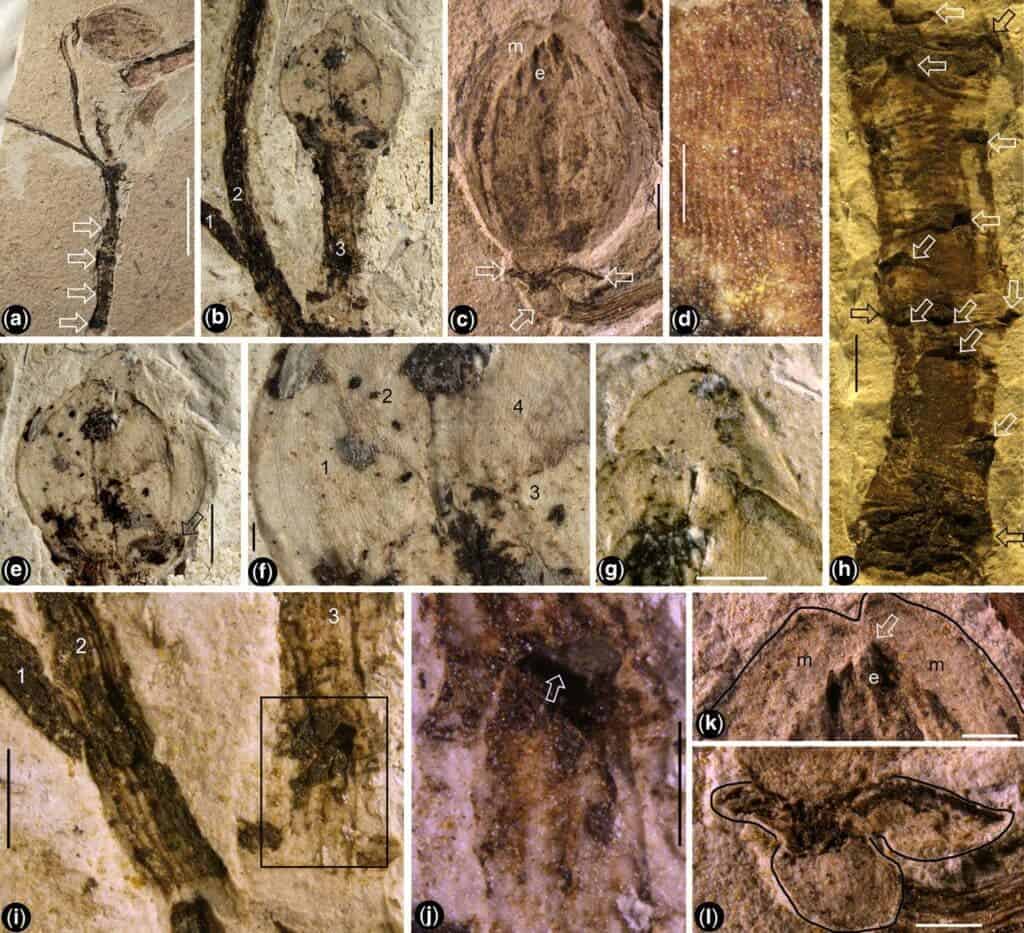This article is part of our Fossil Friday series, where we present fresh and exciting findings from the world of paleontology — on a Friday. See more stories from this series here.
A new discovery could rewrite what we know about the evolution of flowering plants.

Researchers have uncovered the earliest known example of a flower bud. The fossilized plant was discovered in the Inner Mongolia region of China and dated 164 million years ago. This pushes back on our accepted timeline for the evolution of flowering plants by quite a margin — several million years — back into the Jurassic.
The fossil itself belongs to the newly-christened Florigerminis jurassica species. It contains a stem, a leafy branch, bulbous fruit, and a flower bud around 3 square millimeters in size. It is 4.2 centimeters (1.7 inches) long and 2 cm (0.8 inches) wide.
Oldtimey flowers
“Many paleobotanists are surprised [by the fossil], as it is quite different from what is stated in books,” senior author Xin Wang, a researcher at Nanjing Institute of Geology and Paleontology, Chinese Academy of Sciences (NIGPAS), told Live Science. “But I am not so surprised”.
Plants belong to two broad families: flowering plants (angiosperms) and non-flowering plants (gymnosperms). Of these two, gymnosperms were the first to evolve. The presence of a flower bud in the newly-discovered fossil is a clear indicator that it was an angiosperm; its age pushes the earliest known occurrence of this family back into the Jurassic (201-145 million years ago). Up to now, we only had evidence of flowering plants going back to the Cretaceous (145 to 66 million years ago).
Although this isn’t the oldest possible example of a flowering plant we’ve found to date, it is the oldest uncontested example of such a plant. Flowers are very delicate and as such extremely rare to fossilize. The presence of a flower bud and fruit in this fossil, however, dispels any doubt that we are looking at an angiosperm. Other findings are less clear and researchers are still debating whether they are flowers or not.
There are quite significant implications of this finding in the world of paleontology. Up to now, researchers simply assumed any plant that dated to before the Cretaceous was a gymnosperm; this assumption will need to be looked at, and several specimens
Still, the researchers believe that angiosperms were relatively uncommon and probably geographically isolated during their early days, judging from how rare evidence of them is in the fossil record up to today. It’s possible that F. jurassica was one of the first species of angiosperms to appear, as well.
The paper “A Jurassic flower bud from China” has been published in the journal Geological Society of London.






